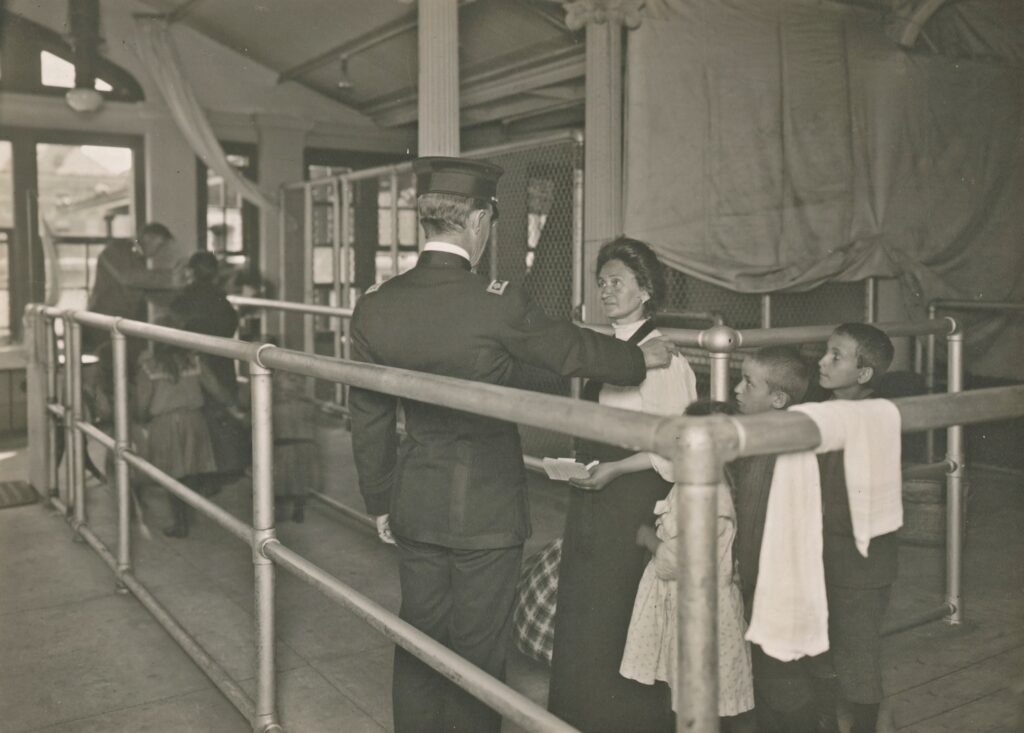As we battle the pandemic, other factors beyond the biomedical come into play. These have to do with the social and life worlds occupied unevenly by the vast populations affected by COVID-19. More than a pandemic, the age of COVID-19 is poised, given the specific conditions of the social, on the cusp of a syndemic.
A syndemic is a synergistic epidemic, where two or more sequential epidemics or disease clusters may occur through biological interactions, and add to the burden of the disease. Coined by medical anthropologist Merrill Singer in the 1990s, a syndemics approach accounts for not just comorbidities–a key element in current COVID-19 discourses–but also, for the social conditions in which vulnerability is heightened and cluster diseases may emerge. A primary reason for syndemics to emerge is health disparity.
Deaths from covid-19 among black Americans are almost double those of whites, and black, brown, and indigenous people face structural racism and health inequalities, an expert panel has said, @AllHealthPolicy https://t.co/l9AI9T4VRN
— The BMJ (@bmj_latest) June 18, 2020
At least two recent studies seem to caution us on the syndemic potential of COVID-19, while moving away from the exclusive biomedical model to a biosocial model of the pandemic. An essay in the Journal of Transport and Health looks at people in stressogenic professions–or stress-causing professions–like commercial drivers, and their vulnerability because the “COVID-19 pandemic exacerbates existing stressors and introduces novel stressors, with potentially exacerbatory impacts on health and safety disparities”. A study in the Annals of Epidemiology stated the case more blandly: “The high rate of COVID-19 exposure, acquisition, and mortality among Black Americans represents ‘multiple co-terminus and interacting epidemics’ occurring within persistent national health and social inequities already impacting Black communities.” In a report of a different kind, The Conversation said: “A major outbreak of COVID-19 in the Navajo [a Native-American population in the US] Nation is one example. Many Navajo people have underlying health conditions and lack basic needs, including access to running water”.
Clearly, the current crisis in countries like India, then, is not reflective of a virus alone, but an impending failure of public health mechanisms, social-welfare nets, and food security programs–arguably facing an epidemic of their own–and pre-existing conditions that arise from all the above. Pathologies arising from malnutrition, unhygienic living conditions, and acute poverty possess a related biosocial dimension: stigma.
Stigma: A Social Disease
There are two ironically opposed stigmas that contribute to the COVID-19 syndemic at hand.
First, the stigmatization of illnesses or health conditions, in conjunction with specific socially discriminatory and unjust practices, ensure that syndemics will rise. As Bayla Ostrach, Shir Lerman and Merrill Singer phrase it in their introduction to Stigma Syndemics, “Syndemic interactions, in which stigma is a primary driving structural or social factor, affect disease interactions through the stigmatized identities of the sufferers, the stigmatization of illnesses or health conditions, or both.”

For example, Megan Carney has argued in “Sickness in the Detention System: Syndemics of Mental Distress, Malnutrition, and Immigration Stigma in the United States,” that the population of “illegal immigrants” in the USA’s many detention camps are hotspots for syndemics. The syndemic evolves from the root stigma of being an ‘illegal’ immigrant, mental health crises, and chronic malnutrition due to unequal food access (stigma is a social disease, as Erving Goffman argued in his Stigma: Notes on the Management of a Spoiled Identity, 1963). High levels of stress are induced due to detention, forced marches, displacement, interrogations by the law-and-order machinery, negative media coverage, a xenophobic and alienating social order, and the desperation to obtain a sustainable income.
Now, take the case of India, where migrant stigma is as layered and complex. As migrant labour marches across India towards their homes and villages, inevitable poverty, destitution, and fears of not surviving the march, combine with the alienation from cultures and social orders that they once sustained. Central to the economic process of the city, but now rendered peripheral to the responsibilities of the State, migration stigma exposes vulnerability at two levels. First, vulnerability inside the world of the migrant, as they lived in and now rapidly exit the city. Second, the vulnerability on the outside, of their distant families. In the light of the pandemic, the prospects of numerous families that once hinged upon their close relatives toiling away in the city, diminish by the hour.
And so, the vulnerability of the migrant in transit mirrors the vulnerability of their families elsewhere: these two worlds are about to collide to produce the syndemic in the age of COVID-19.
You May Also Like: What the Humanities Can Teach Us During A Pandemic
Think of the ripe conditions of the syndemic in this case: already undernourished during their working lives and even more abjectly dehydrated as they march in the Indian summer, migrant populations are already open to various ailments, as the pandemic rages around them. Their structural conditions produce the comorbidities that then exacerbate the chances of infection and death from COVID-19. As Carney tells us, “malnutrition is a known syndemic risk factor, as it interacts with a variety of infectious … and non-infectious diseases such as diabetes … including in concert with depression”.

In short, a journey through extreme conditions that we have seen migrants make out of Delhi and other cities and states, will generate the syndemic factors that will then alter the shape of the COVID-19 pandemic. Migrant stigma, arising from their status as undocumented and unaddressed people, is primed to catalyse syndemic conditions.
The second stigmatisation that we have seen in recent times could well be placed at the opposite end of society: the sudden stigmatisation of doctors and health workers. Long looked up to as saviours and guardians, members of the medical profession now receive opprobrium. Excluding heinous acts such as physical assaults, there are other forms of dehumanising stigmatisation one hears of.
Reports highlight the onset of stigma against this group: People do not get into elevators with doctors, they are ostracized by members of the residential areas they live in, they are deemed contaminants. In a span of a few months, medical professionals have gone from being society’s first line of defence, to facing stigma for providing this defence.
Covid-19 is unleashing untouchability & bigotry in India – and doctors who die of Covid-19 aren’t spared. Ironically, the locals who gathered in mobs to protest created a favourable condition for the spread of Covid-19, not the dead getting a dignified but safe funeral. pic.twitter.com/4JarE1o9lV
— Kavita Krishnan (@kavita_krishnan) April 20, 2020
These rising stress levels in a profession that, given the circumstances, is stressogenic in itself, are also driving the country towards syndemic conditions. Think of, for instance, the highly stressful conditions under which medical/health professionals now work: exposing themselves to the virus, inadequate safety equipment, extended working hours, and now social ostracization, among others. This is social distancing – a wholly inappropriate term, given its horrific history – carried to very high biosocial levels.
Health disparities that emanates from social disparities have never been so clearly mapped as the present. The sight of migrants walking is matched by the sight of tents pitched in stadia and open spaces to incarcerate the diagnosed. Access to health care and/or testing mechanisms remains an acrimoniously debated issue. The stigma around the COVID-19 recovered, the medical profession, and the dead highlight the biosocial aspects of the pandemic, and contribute to the stigma syndemic.
Biology and the Social
As humans develop immunities through their engagement with the virus, questions of the social remain central to biology. As the anthropologist Tim Ingold points out, the domain of the social is not distinct from the domain of the biological. Structural inequalities open up some races, groups, communities to infection more than others. Stereotypes and prejudices emerge, signalling the social exclusion of those deemed to be the causal agents, spreaders and, “infecting populations.” Thus, commentators like Marc Grimm note the increase in anti-Semitism in social media during the ongoing Corona pandemic.
Studies further show that during the 1918 Spanish influenza epidemic in the USA, Black Americans had lower morbidity rates (although these may well have been underreported), but higher mortality rates: as a race, they didn’t easily get infected, but once they did, their chances of dying from it were much higher than that of the whites. In the tragic flip side to the ongoing racialized tragedy of COVID-19, countries close borders and rely on foreign healthcare workers, notes Gurminder Bhambra.
“42% of doctors and 21% of nurses are from black and minority ethnic backgrounds.”
Here’s @AhirShah on how immigration is propping up our NHS. #TheMashReport pic.twitter.com/e4udollMck
— BBC Two (@BBCTwo) April 14, 2020
Linking the syndemic possibilities, such as the ones outlined above, in unexpected ways is Romi Crawford. Observing the “situational globality” of the phrase “I can’t breathe,” Crawford writes:
While the circumstances of COVID-19 and George Floyd’s death are not the same, the outcomes of both are heavily impacted by American race and class imbalances. COVID-19 death statistics reveal racial disparity in American society and so does the George Floyd incident.
Such revealing studies in the Indian context are perhaps still in their nascent stages, yet the effects of the COVID-19 syndemic on vulnerable populations are clearly visible, be it in the treatment of migrant workers, or doctors.
With an extended stay by the virus being more than likely, in contexts of such racial, class, caste, and economic disparity, we are staring at a syndemic in the making.
Featured photograph by Marcelo Leal on Unsplash






